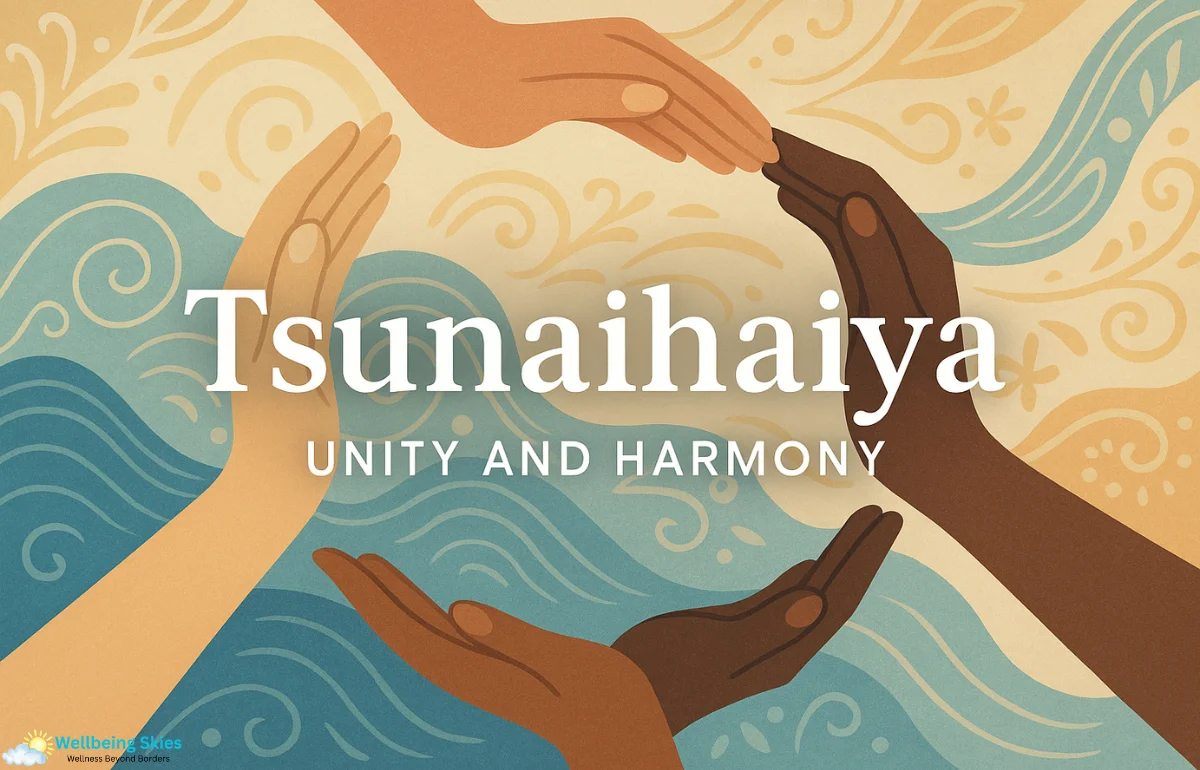Understanding the Essence of Tsunaihaiya
The word Tsunaihaiya carries more than just phonetic beauty—it holds layers of meaning that connect cultures, emotions, and generations. Often associated with unity, peace, creativity, and heritage, Tsunaihaiya represents a deep-rooted human desire for connection and understanding. Though its origin remains wrapped in folklore and oral storytelling, the idea behind it continues to inspire thinkers, artists, and communities around the world.
Tsunaihaiya has evolved into a universal symbol of emotional strength and identity, reminding us that language is not just a tool for communication but also a vessel of shared experience.
Folklore and Origins of Tsunaihaiya
The Mythic Roots
Many scholars believe that Tsunaihaiya originated in ancient coastal communities, where rhythmic chants and ritual songs reflected harmony between people and nature. Its melodic tone hints at sounds used in tribal ceremonies, possibly symbolizing togetherness, gratitude, and protection.
These early interpretations made Tsunaihaiya more than a word—it became a ritual of belonging. Oral traditions carried it across generations, embedding it with cultural identity and moral values.
The Power of Oral Traditions
In several cultures, Tsunaihaiya was not written but spoken. Each pronunciation, rhythm, or context shaped its meaning differently. This oral evolution mirrors how languages grow—fluid, adaptable, and responsive to emotion. As these tales and chants spread across regions, Tsunaihaiya began to represent a universal longing for unity and resilience, connecting people beyond linguistic boundaries.
Tsunaihaiya in Literature and Art
A Word That Invites Interpretation
Writers, poets, and dramatists often turn to Tsunaihaiya to express themes of journeys, transformation, and harmony. In literature, it appears as a metaphor for the search for meaning, like a guiding star leading characters through conflict toward peace. It resonates because it captures what every culture seeks: understanding, hope, and renewal.
Artistic Symbolism
The influence of Tsunaihaiya extends far beyond text. In the visual arts, it inspires painters and designers to depict balance and connection. In music, it echoes through lyrics and rhythms that blend tradition with innovation. The term invites creativity—an open space for artists to translate emotional energy into form.
Many musicians describe using Tsunaihaiya as a creative anchor—a reminder that art should unite rather than divide. Whether through colors, melodies, or dance, it expresses freedom, resilience, and the beauty of shared humanity.
Cultural Significance and Modern Relevance
A Symbol of Heritage and Modernity
Culture breathes life into language, and Tsunaihaiya thrives where tradition meets progress. In many communities, it remains part of festivals, chants, and folk stories, linking elders and youth through shared expressions. Yet, it has also found its way into modern branding, social movements, and global conversations.
Marketers and creators use the term in campaigns to convey authenticity, inclusivity, and trust—values that align perfectly with its historical essence. This transition from oral folklore to digital representation shows how Tsunaihaiya adapts without losing meaning, much like culture itself.
Resonance in Global Society
In an increasingly interconnected world, Tsunaihaiya has become a cross-cultural emblem of peace and cooperation. It reminds us that even as we speak different languages and hold diverse traditions, certain human emotions—love, hope, and unity—remain constant.
Social thinkers, educators, and creators now use Tsunaihaiya as a conceptual tool for promoting empathy and understanding. It captures the heart of what humanity shares—a desire for balance, creativity, and mutual respect.
Tsunaihaiya and Personal Growth
A Word That Reflects Inner Transformation
On a personal level, Tsunaihaiya has taken on new life as a philosophy of growth. Many people use it to describe inner peace, strength, and renewal. Life coaches, writers, and motivational speakers adopt it as a metaphor for self-discovery—a reminder to honor the past while embracing change.
When applied in daily life, Tsunaihaiya becomes a gentle encouragement to stay grounded in values while exploring new horizons. It teaches that true resilience comes from harmony between who we are and who we strive to become.
Tsunaihaiya as a Global Identity
Language Beyond Borders
Perhaps what makes Tsunaihaiya so extraordinary is that it belongs to everyone and no one at once. ts meaning extends beyond the limitations of geographic boundaries, creeds, and different tongues. By embodying inclusivity, it acts as a cultural bridge connecting diverse communities through shared emotion and imagination.
In this sense, Tsunaihaiya has evolved into a global identity marker—a modern reminder that unity is not uniformity, but coexistence.
The Timeless Legacy of Tsunaihaiya
An Ever-Adapting Symbol
The story of Tsunaihaiya continues to unfold. As technology, art, and culture evolve, so will its interpretations. From ancient chants to modern media, it remains a word of transformation—one that invites people to connect, create, and heal.
Every generation redefines Tsunaihaiya in its own way. For some, it is a creative spark; for others, a philosophy of unity. But the essence stays constant: the belief that human connection is both the foundation and future of civilization.
Conclusion – Why Tsunaihaiya Still Matters
Tsunaihaiya is not just a beautiful word—it’s a living idea. It reminds us that even as cultures change, the need for harmony and creativity never fades. From folklore to modern art, its journey reflects humanity’s ongoing quest to stay connected and inspired.
As we move into an era defined by both individuality and globalization, Tsunaihaiya challenges us to find balance—to celebrate our uniqueness while embracing our shared spirit.
If you’re a writer, artist, or dreamer, let Tsunaihaiya guide your work. Use it as your inspiration to create, connect, and continue the timeless tradition of unity through expression.
Learn about Tiimatuvat
I’m Salman Khayam, founder and editor of this blog, with 10 years of experience in Travel, Lifestyle, and Culture. I share expert tips on Destinations, Hotels, Food, Fashion, Health, and more to help you explore and elevate your lifestyle.

